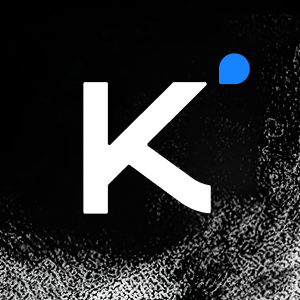Spine运行时中动态替换MeshAttachment纹理的技术解析
2025-06-12 08:11:54作者:乔或婵
前言
在游戏开发中,角色换装或动态改变外观是常见需求。本文将深入探讨如何在Spine运行时(PixiJS v8版本)中实现动态替换MeshAttachment纹理的技术方案。
核心概念
MeshAttachment与纹理关系
MeshAttachment是Spine动画系统中用于定义网格附着物的组件,它包含了顶点、UV坐标等网格信息以及关联的纹理数据。在运行时替换纹理需要理解几个关键对象:
- TextureAtlasRegion:定义了纹理在Atlas中的区域信息
- TextureAtlasPage:Atlas的页面信息
- SpineTexture:Spine运行时对PixiJS纹理的封装
技术实现方案
基础纹理替换方法
最简单的纹理替换方式是通过直接修改MeshAttachment的region属性:
const mesh = spineObj.findSlot('slotName').attachment;
const texture = new SpineTexture(pixiTexture);
mesh.region.texture = texture;
这种方法适用于新纹理与原纹理在Atlas中位置和尺寸完全相同的情况,本质上是一种"重新着色"操作。
完整纹理替换方案
更通用的解决方案需要完整更新纹理区域信息:
// 1. 准备新纹理
const newTexture = PIXI.Texture.from('path/to/texture.png');
// 2. 创建Spine纹理包装
const spineTexture = spine.SpineTexture.from(newTexture.source);
// 3. 获取目标插槽和区域
const slot = spineObj.skeleton.findSlot("targetSlot");
const region = slot.attachment.region;
// 4. 更新区域参数
region.u = region.v = 0;
region.u2 = region.v2 = 1;
region.page.width = region.width = region.originalWidth = spineTexture._image.width;
region.page.height = region.height = region.originalHeight = spineTexture._image.height;
// 5. 应用新纹理
region.texture = spineTexture;
// 6. 更新附件区域
slot.attachment.updateRegion();
特殊案例:使用RenderTexture
当需要使用PIXI.RenderTexture时,需要额外设置资源属性:
renderTexture.source.resource = {
width: renderTexture.width,
height: renderTexture.height
};
注意事项
- 纹理尺寸匹配:新纹理的尺寸和UV坐标需要合理设置,否则可能导致显示异常
- 序列动画限制:此方法不适用于序列帧动画的纹理替换
- 性能考量:频繁替换纹理可能影响性能,建议合理设计换装系统
- 内存管理:注意纹理资源的释放,避免内存泄漏
未来展望
Spine官方已计划在未来的版本中提供标准化的纹理替换API,届时操作将更加简便和安全。开发者可以关注官方更新以获取更好的支持。
结语
通过本文介绍的技术方案,开发者可以在PixiJS v8环境中灵活实现Spine角色的动态换装效果。理解Spine运行时内部纹理管理机制是掌握这项技术的关键。在实际项目中,建议根据具体需求选择最适合的实现方式。
登录后查看全文
热门项目推荐
相关项目推荐
 kernelopenEuler内核是openEuler操作系统的核心,既是系统性能与稳定性的基石,也是连接处理器、设备与服务的桥梁。C032
kernelopenEuler内核是openEuler操作系统的核心,既是系统性能与稳定性的基石,也是连接处理器、设备与服务的桥梁。C032 Kimi-K2-ThinkingKimi K2 Thinking 是最新、性能最强的开源思维模型。从 Kimi K2 开始,我们将其打造为能够逐步推理并动态调用工具的思维智能体。通过显著提升多步推理深度,并在 200–300 次连续调用中保持稳定的工具使用能力,它在 Humanity's Last Exam (HLE)、BrowseComp 等基准测试中树立了新的技术标杆。同时,K2 Thinking 是原生 INT4 量化模型,具备 256k 上下文窗口,实现了推理延迟和 GPU 内存占用的无损降低。Python00
Kimi-K2-ThinkingKimi K2 Thinking 是最新、性能最强的开源思维模型。从 Kimi K2 开始,我们将其打造为能够逐步推理并动态调用工具的思维智能体。通过显著提升多步推理深度,并在 200–300 次连续调用中保持稳定的工具使用能力,它在 Humanity's Last Exam (HLE)、BrowseComp 等基准测试中树立了新的技术标杆。同时,K2 Thinking 是原生 INT4 量化模型,具备 256k 上下文窗口,实现了推理延迟和 GPU 内存占用的无损降低。Python00 kylin-wayland-compositorkylin-wayland-compositor或kylin-wlcom(以下简称kywc)是一个基于wlroots编写的wayland合成器。 目前积极开发中,并作为默认显示服务器随openKylin系统发布。 该项目使用开源协议GPL-1.0-or-later,项目中来源于其他开源项目的文件或代码片段遵守原开源协议要求。C00
kylin-wayland-compositorkylin-wayland-compositor或kylin-wlcom(以下简称kywc)是一个基于wlroots编写的wayland合成器。 目前积极开发中,并作为默认显示服务器随openKylin系统发布。 该项目使用开源协议GPL-1.0-or-later,项目中来源于其他开源项目的文件或代码片段遵守原开源协议要求。C00 HunyuanOCRHunyuanOCR 是基于混元原生多模态架构打造的领先端到端 OCR 专家级视觉语言模型。它采用仅 10 亿参数的轻量化设计,在业界多项基准测试中取得了当前最佳性能。该模型不仅精通复杂多语言文档解析,还在文本检测与识别、开放域信息抽取、视频字幕提取及图片翻译等实际应用场景中表现卓越。00
HunyuanOCRHunyuanOCR 是基于混元原生多模态架构打造的领先端到端 OCR 专家级视觉语言模型。它采用仅 10 亿参数的轻量化设计,在业界多项基准测试中取得了当前最佳性能。该模型不仅精通复杂多语言文档解析,还在文本检测与识别、开放域信息抽取、视频字幕提取及图片翻译等实际应用场景中表现卓越。00 GLM-ASR-Nano-2512GLM-ASR-Nano-2512 是一款稳健的开源语音识别模型,参数规模为 15 亿。该模型专为应对真实场景的复杂性而设计,在保持紧凑体量的同时,多项基准测试表现优于 OpenAI Whisper V3。Python00
GLM-ASR-Nano-2512GLM-ASR-Nano-2512 是一款稳健的开源语音识别模型,参数规模为 15 亿。该模型专为应对真实场景的复杂性而设计,在保持紧凑体量的同时,多项基准测试表现优于 OpenAI Whisper V3。Python00 GLM-TTSGLM-TTS 是一款基于大语言模型的高质量文本转语音(TTS)合成系统,支持零样本语音克隆和流式推理。该系统采用两阶段架构,结合了用于语音 token 生成的大语言模型(LLM)和用于波形合成的流匹配(Flow Matching)模型。 通过引入多奖励强化学习框架,GLM-TTS 显著提升了合成语音的表现力,相比传统 TTS 系统实现了更自然的情感控制。Python00
GLM-TTSGLM-TTS 是一款基于大语言模型的高质量文本转语音(TTS)合成系统,支持零样本语音克隆和流式推理。该系统采用两阶段架构,结合了用于语音 token 生成的大语言模型(LLM)和用于波形合成的流匹配(Flow Matching)模型。 通过引入多奖励强化学习框架,GLM-TTS 显著提升了合成语音的表现力,相比传统 TTS 系统实现了更自然的情感控制。Python00 Spark-Formalizer-X1-7BSpark-Formalizer 是由科大讯飞团队开发的专用大型语言模型,专注于数学自动形式化任务。该模型擅长将自然语言数学问题转化为精确的 Lean4 形式化语句,在形式化语句生成方面达到了业界领先水平。Python00
Spark-Formalizer-X1-7BSpark-Formalizer 是由科大讯飞团队开发的专用大型语言模型,专注于数学自动形式化任务。该模型擅长将自然语言数学问题转化为精确的 Lean4 形式化语句,在形式化语句生成方面达到了业界领先水平。Python00
项目优选
收起
deepin linux kernel
C
26
10
OpenHarmony documentation | OpenHarmony开发者文档
Dockerfile
427
3.28 K
本项目是CANN提供的数学类基础计算算子库,实现网络在NPU上加速计算。
C++
689
340
暂无简介
Dart
686
161
Ascend Extension for PyTorch
Python
233
266
Nop Platform 2.0是基于可逆计算理论实现的采用面向语言编程范式的新一代低代码开发平台,包含基于全新原理从零开始研发的GraphQL引擎、ORM引擎、工作流引擎、报表引擎、规则引擎、批处理引引擎等完整设计。nop-entropy是它的后端部分,采用java语言实现,可选择集成Spring框架或者Quarkus框架。中小企业可以免费商用
Java
9
1
React Native鸿蒙化仓库
JavaScript
266
327
🎉 (RuoYi)官方仓库 基于SpringBoot,Spring Security,JWT,Vue3 & Vite、Element Plus 的前后端分离权限管理系统
Vue
1.22 K
668
🔥LeetCode solutions in any programming language | 多种编程语言实现 LeetCode、《剑指 Offer(第 2 版)》、《程序员面试金典(第 6 版)》题解
Java
65
19
openEuler内核是openEuler操作系统的核心,既是系统性能与稳定性的基石,也是连接处理器、设备与服务的桥梁。
C
45
32